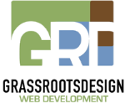Database
A Database is a collection of information stored in a way that makes it easy to retrieve, modify and search. A database can be stored in a single file with all the information stored together in a single table which is called a flat database or stored in multiple tables with some common access information referred to as a relational database.
There are a number of commercial database and Open Source databases available.
Each item (a person for example) in a database has it's own Record. Each piece of information about that item or record are stored in Fields. All the information in all the records makes up the Database.
Each Field can have information typed into it. Use the Tab key to move forward through the Field and the Shift-Tab to move backwards. Many databases also use the arrow keys to move around.
Though many fields only allow a single line of input some allow multiple lines. When the cursor reaches the bottom of a field with multiple lines the text will scroll upwards to show any information that is below the line of sight. If there is more text in the field than there is room on the screen use the arrow keys to move the cursor through the text.
It is possible to mask individual fields to make data entry easier. For instance the field for phone numbers can be formatted to only allow numbers to be entered.
There are many different ways to use information in a database. In order to use it you can search for and display information using various filters to allow or disallow certain records to display. This is referred to as a query.
The data can be arranged to create reports and print the information in a specific format.
It is crucial that the information typed into a Database or information updated be saved before leaving the program. Many data errors can be traced back to power-failures or accidental computer shut downs.
The data can also be used by other programs for things like invoicing and form letters. The data from a database can be merged with forms created in other programs for a wide range of uses. Personal letters can be composed using information from a database which is merged with a form letter.
When setting up a database make sure to take a bit of time to decide what fields are needed and how they relate to other information. For instance, if an address is required does it need to be broken down into a number of fields such as street, apartment, city, etc? Does the street need to be broken down into house number, street name, street type, etc? Does a phone number need a separate field for the area code? Taking time to decide what is needed before beginning a database project is better than spending many frustrating hours modifying the data in the future.
Last updated: March 3, 2021
